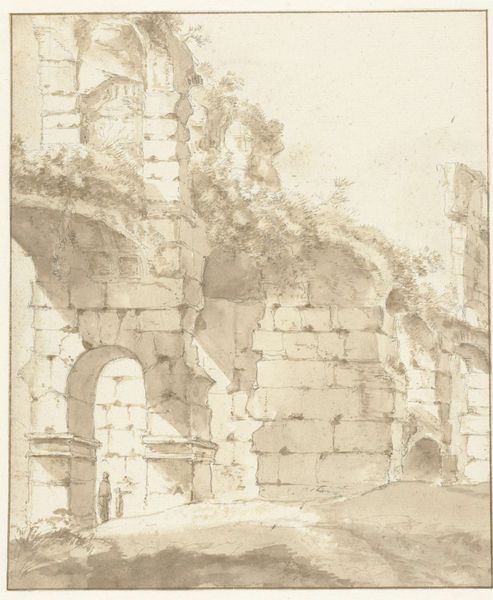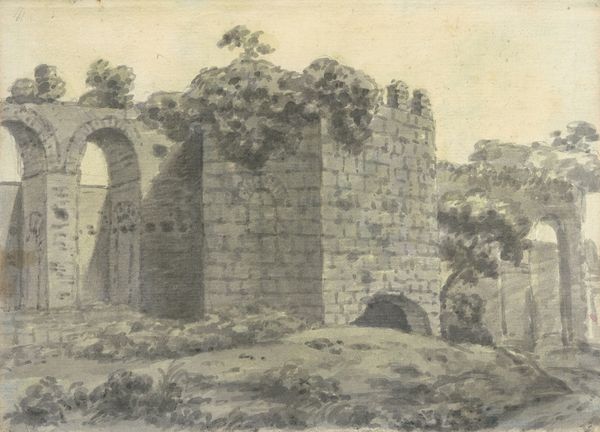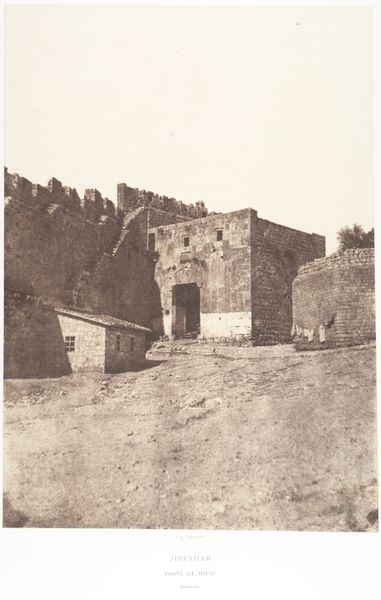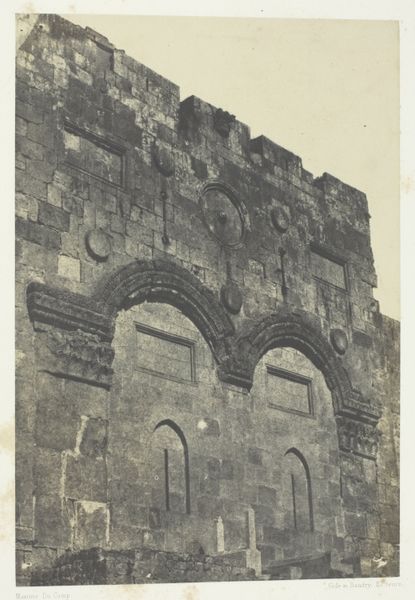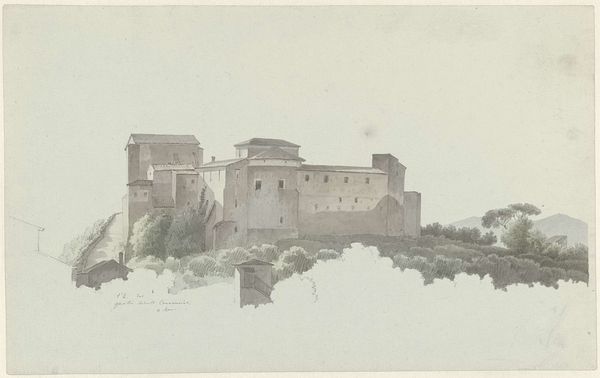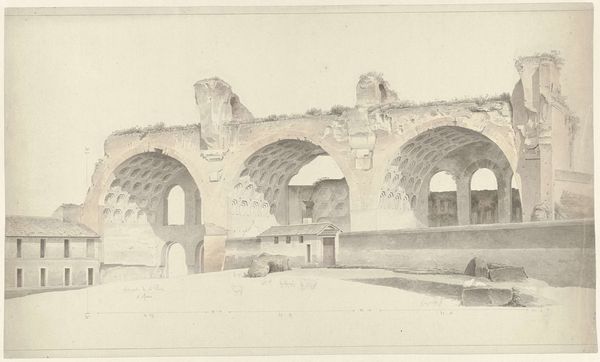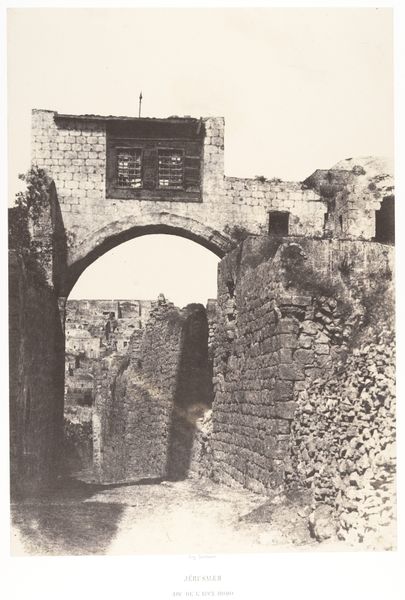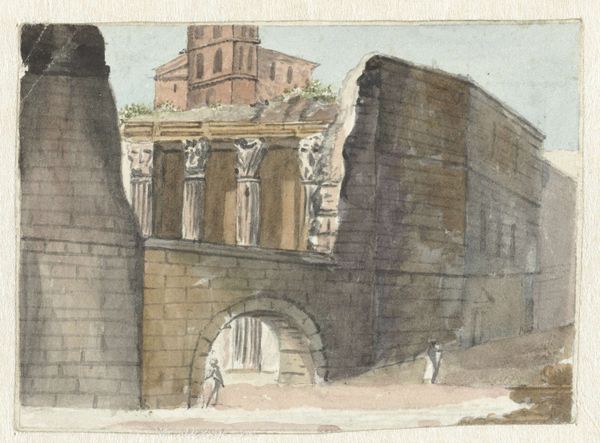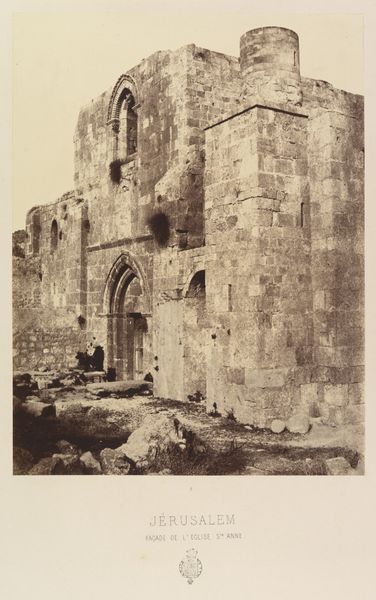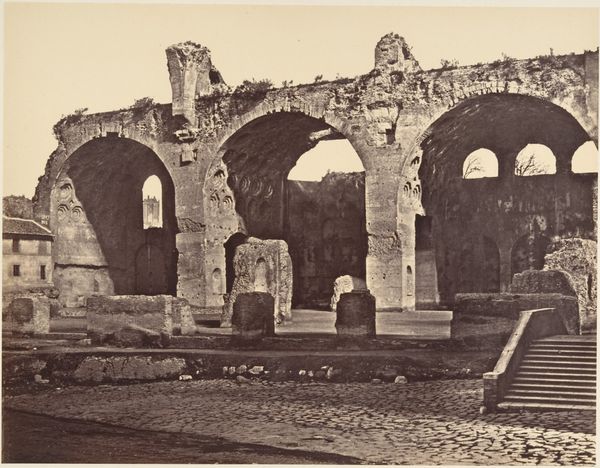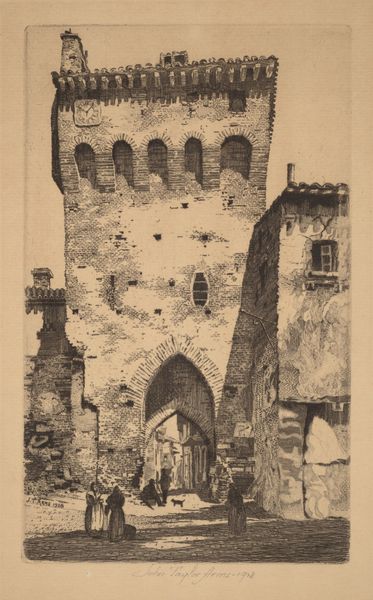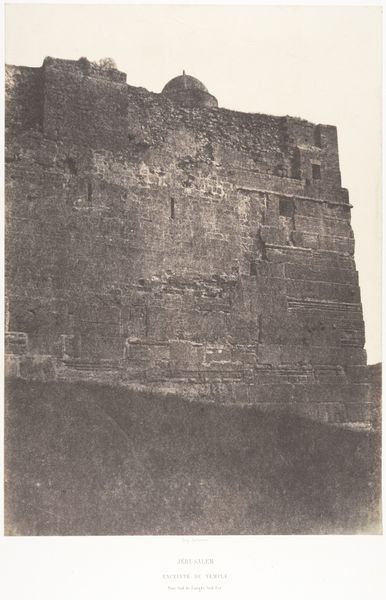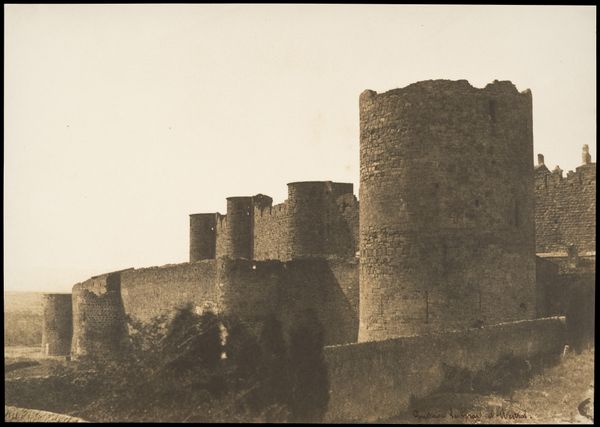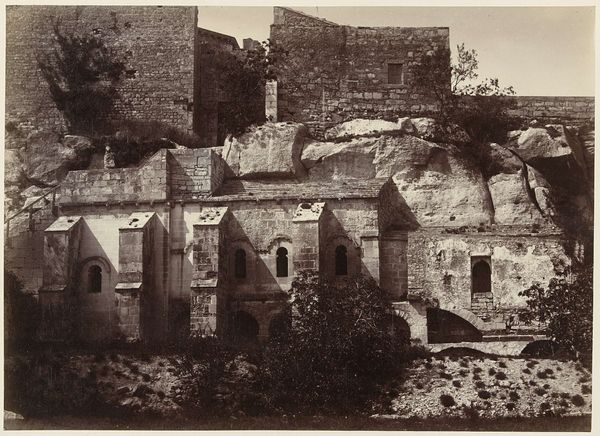
painting, watercolor
#
painting
#
landscape
#
charcoal drawing
#
watercolor
#
romanticism
#
cityscape
#
watercolor
Dimensions: height 368 mm, width 502 mm
Copyright: Rijks Museum: Open Domain
Editor: Here we have Josephus Augustus Knip's watercolor and charcoal drawing, "The Aurelian Wall in Rome," dating back to around 1809-1812. I’m immediately struck by how monumental and weathered the wall appears. It feels both solid and fragile at the same time. What do you see in this piece? Curator: I see a meditation on time and endurance, certainly. Walls, especially city walls, are powerful symbols. They represent protection, exclusion, order. But here, we see nature reclaiming the wall—vegetation sprouts from its surface. Editor: That tension is really interesting. So the walls are not just barriers. Curator: Exactly. They also become testaments to the past, burdened with history and stories. Notice the figure at the base; seemingly insignificant, it highlights the sheer scale and reminds us that individuals exist within a much larger historical context. Do you find anything compelling about the use of watercolor and charcoal? Editor: The muted palette gives it this aged, almost sepia-toned feel, despite being a watercolor. I also wonder if it's Knip looking back to the past? The human figure is wearing garb like that of renaissance painters... Curator: Perhaps, there may be some intentionality in his choice to place his modern, but outdated figure, at the base of a crumbling wall of defense! This work seems to suggest a narrative of decay, or perhaps resilience as nature slowly starts again over architecture? Editor: That gives me a lot to think about when I observe architecture! Thanks for sharing your thoughts! Curator: My pleasure! It’s fascinating to consider how these layers of symbolism intersect and create meaning.
Comments
rijksmuseum about 2 years ago
⋮
Construction of this 18-kilometre-long rampart began under the reign of Roman Emperor Aurelian (270–275 AD), which explains its name, the Aurelian Wall. In choosing a low vantage point, Knip underscored the structure’s menacing massiveness. Knip’s inscription on this drawing is amusing: evidently herds of cattle regularly caused jams on the road along the wall.
Join the conversation
Join millions of artists and users on Artera today and experience the ultimate creative platform.
